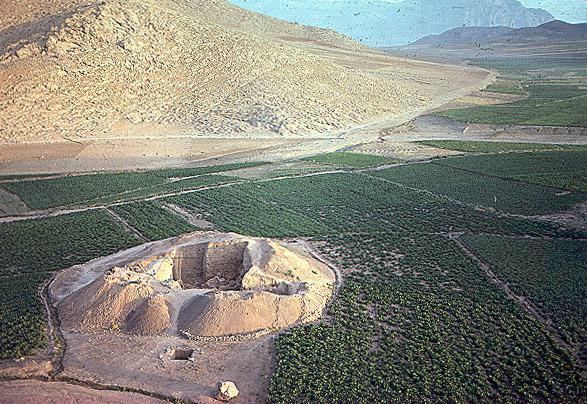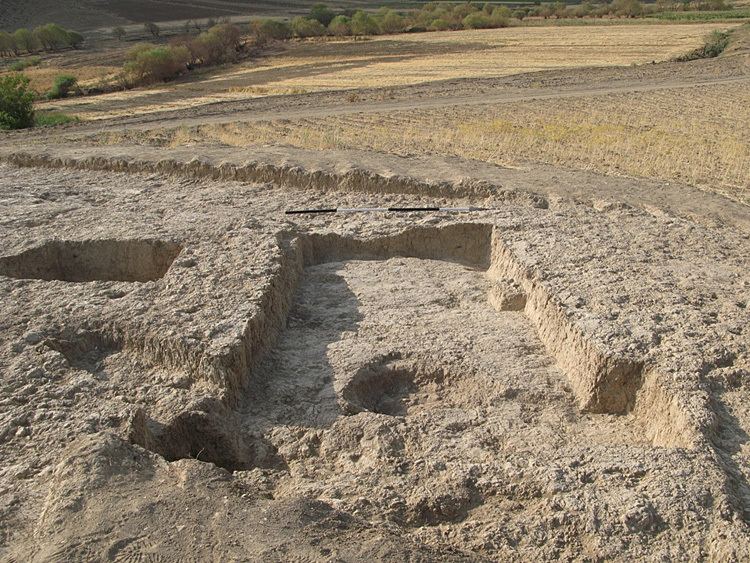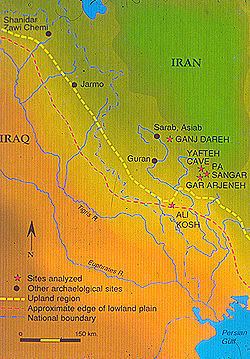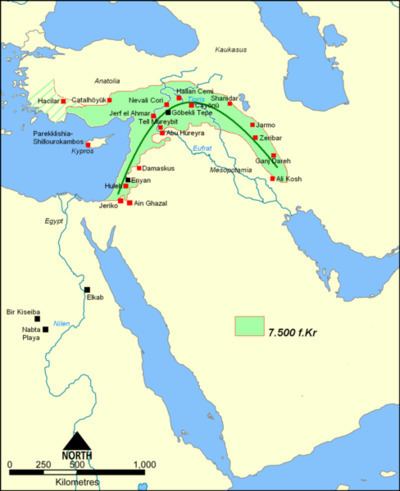Region Gamas-Ab Valley Type mound settlement | Altitude 1,400 m (4,593 ft) Founded ca. 10,000 Period Neolithic | |
 | ||
Location Kermanshah Province, Iran | ||
Jewels of the oracle let s play square of ganj dareh
Ganj Dareh (Persian: تپه گنج دره; "Treasure Valley" in Persian, or "Treasure Valley Hill" if tepe/tappeh (hill) is appended to the name) is a Neolithic settlement in the Iranian Kurdistan portion of Iran. It is located to the east of Kermanshah, in the central Zagros Mountains.
Contents
- Jewels of the oracle let s play square of ganj dareh
- Square of ganj dareh let s listen jewels of the oracle
- Genetics
- References

First discovered in 1965, it was excavated by Canadian archaeologist, Philip Smith during the 1960s and 1970s, for four field seasons.

The oldest settlement remains on the site date back to ca. 10,000 years ago, and have yielded the earliest evidence for goat domestication in the world. The only evidence for domesticated crops found at the site so far is the presence of two-row barley.

The remains have been classified into five occupation levels, from A, at the top, to E.
Square of ganj dareh let s listen jewels of the oracle
Genetics

Researchers sequenced the genome from the petrous bone of a 30-50 woman from Ganj Dareh, GD13a. mtDNA analysis shows that she belonged to Haplogroup X. She phenotypically similar to the Anatolian early farmers and Caucasus Hunter-Gatherers. Her DNA revealed that she had black hair, brown eyes and was lactose intolerant. The derived SLC45A2 variant associated with light skin was not observed in GD13a, but the derived SLC24A5 variant which is also associated with the same trait was observed.

GD13a is genetically closest to the ancient Caucasus Hunter-Gatherers identified from human remains from Georgia (Satsurblia Cave and Kotias Klde), while also sharing genetic affinities with the people of the Yamna culture and the Afanasevo culture. She belonged to a population that was genetically distinct from the Neolithic Anatolian farmers. In terms of modern populations, she shows some genetic affinity with the Baloch people, Makrani caste and Brahui people. Her population did not contribute very much genetically to modern Europeans.
